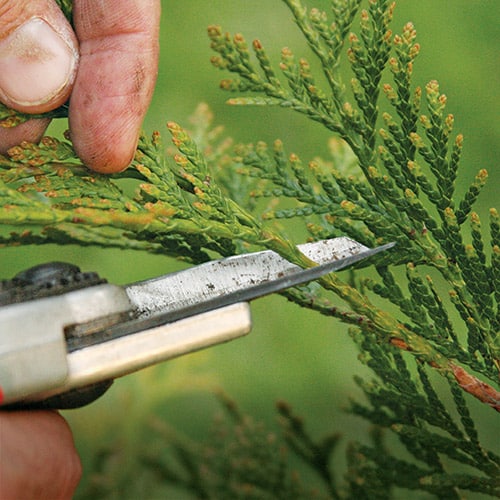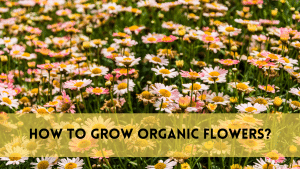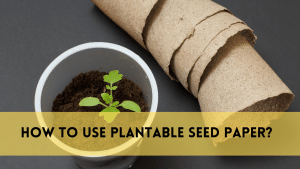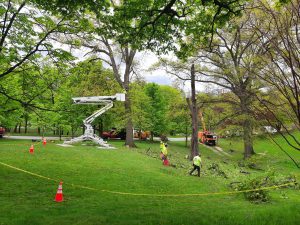Trimming trees is essential to keeping a healthy and visually appealing landscape. However, incorrect tree trimming can damage or even kill your trees. At Houston Heights Tree Services, we are committed to providing experienced advice on how to trim a tree without killing it. Follow our thorough guide to keep your trees healthy and lively.
Understand the importance of proper tree trimming
Proper tree trimming encourages healthy development, improves attractiveness, and lowers disease risk. It also helps to avoid potential threats, such as fallen branches. Here’s why proper tree trimming is essential:

Encourages Healthy Growth: Eliminating dead or diseased branches allows the tree to concentrate its resources on new growth.
Improved Appearance: Trimming helps maintain the tree’s shape and balance, improving its overall appearance in your landscape.
Remove sick or dead branches to prevent illnesses from spreading to other tree sections.
Reduces Hazards: Proper trimming eliminates weak branches that could fall and cause harm or damage during storms.
When is the best time to trim trees?
Timing is essential when it comes to tree trimming. Different trees require different trimming times. Some general guidelines are as follows:
Winter Trimming: For most trees, the dormant winter months are the best time to trim. During this time, the tree experiences less stress and sap loss.
Spring and Summer Trimming: During the growing season, you can do some light trimming and remove dead branches. However, avoid severe cutting, as it might cause stress on the tree.
Fall Trimming: Avoid trimming in the fall because decay fungus disseminates spores abundantly and wound healing is slower.
Essential Tools for Tree Trimming
Using the proper tools is critical for successful and safe tree trimming. Here are some must-have tools.
- Pruning shears are ideal for cutting tiny branches up to an inch in diameter.
- Loppers are suitable for branches up to 2 inches in diameter.
- We use pruning saws to cut larger branches.
- Pole pruners make it easier to reach higher branches without the need for a ladder.
- Safety equipment includes gloves, glasses, and a sturdy hat to guard against falling debris.
How to trim a tree without killing it?
Step-by-step instructions for trimming trees without killing them
1. Look at the tree
Check the tree for dead, diseased, or overgrown branches. Identify the regions that require trimming to support healthy growth. This assessment helps you plan the cuts for optimal results, maintaining the tree’s overall health and beauty.
2. Gather the necessary tools
Assemble the necessary tools: pruning shears, loppers, a hand saw, and safety equipment such as gloves, goggles, and a helmet. Ensure all tools are clean and sharp before making precise cuts to reduce the chance of damaging the tree or injuring someone.
3. Plan the cuts
Decide which branches to eliminate, emphasizing dead, diseased, or crossing branches. Aim to keep the tree’s natural contour. Planning allows you to avoid over-pruning, which can stress the tree and slow its growth.
4. Start with dead or diseased branches
Begin trimming by first eliminating any dead or unhealthy branches. Cut back to sound wood or the main trunk, making sure not to leave any stubs. This process reduces disease transmission and improves the tree’s general health.
5. Trim overgrown branches
Next, trim any excess branches to create a balanced and open canopy. Make incisions just above a bud or branch junction to stimulate new growth in the desired direction. This helps to keep the tree in excellent shape and healthy.
6. For large branches, use the three-cut method
For huge branches, utilize the three-cut method: an undercut a few inches from the trunk, a top cut further out to reduce the weight, and a final cut near the trunk. This method avoids bark tearing and results in a clean removal.
7. Thin the canopy
Remove extra branches from the canopy to promote air circulation and light penetration. Concentrate on the crossing branches and those that grow inward. Thinning reduces the risk of illness and promotes healthy growth throughout the tree.
8. Take safety precautions
During trimming, prioritize safety by utilizing adequate equipment and stable ladders. If feasible, work with a companion, especially on larger trees. Safety considerations help avoid accidents and promote a smooth, effective trimming procedure.
9. Clean up the debris
After trimming, gather and dispose of all cut branches and trash. This will keep your yard clean and prevent the spread of disease. You can use clipped branches as compost or mulch in your garden.
10. Keep track of the tree’s health
After cutting, routinely check your tree for signs of stress or disease. Water and fertilization are necessary to aid in recovery and development. Ongoing care keeps your tree healthy and gorgeous year-round.
Common tree trimming mistakes to avoid
Avoiding common blunders can help you keep your trees healthy. Here are some hazards to look out for:
Topping: Cutting a tree’s top is detrimental and can result in weak, spindly branches.
Improper Pruning Cuts: Cutting too near the trunk or leaving huge stubs might damage the tree.
Over-pruning: Removing too many branches can stress the tree and slow its growth.
Ignoring Tree Health: Before cutting, always consider the tree’s overall health. Steer clear of trimming during droughts or when the tree is under stress.
If a tree sustains damage during trimming, what should you do?
Assess the Damage: Assess the extent of the damage immediately to determine whether it affects major limbs, smaller branches, or the trunk. This evaluation aids in determining the next steps in the therapy process.
Clean the wound by trimming the ragged edges with a sharp, sterile instrument. Clean cuts encourage rapid healing and lower the risk of infection.
Avoid sealants: Do not apply wound sealer or paint. Trees naturally compartmentalize damage, and sealants can trap moisture, leading to deterioration and disease.
Cabling and bracing: Consider using support systems like cabling or bracing to stabilize the tree and aid in its recovery if large branches have partially broken.
Water and fertilize the tree to help it recover. Healthy trees are better able to repair and resist further stress.
Pest and Disease Monitoring: Keep an eye out for pest and disease indicators in the affected area. Early detection and treatment are essential for avoiding further injury.
Consult an Arborist: If you have substantial damage or are unsure how to continue, call a professional arborist. They can provide expert guidance and treatment to give the tree the best possible chance of recovery.
Related Posts:
When to call professionals?
While DIY tree trimming can be beneficial, some situations necessitate professional assistance. Call Houston Heights Tree Service if:
The tree is either huge or near electricity lines.
You must remove large branches to prevent the tree from succumbing to illness.
You need to figure out the proper trimming technique.
Our licensed arborists have the experience and equipment to complete any tree-pruning task safely and effectively.
FAQS
How much of the tree should I trim at once?
Avoid removing more than 25% of the tree’s foliage in a single pruning session. Over-pruning can cause stress on the tree, impair its ability to photosynthesize, and make it more vulnerable to diseases and pests. Trimming the tree slowly over multiple seasons is safer for its health.
How can I make proper cuts to avoid damaging the tree?
For larger branches, use the three-cut method: a minor undercut a few inches from the trunk, a second cut further out to remove the branch, and a final cut close to the trunk, just beyond the branch collar. This approach reduces bark tearing and facilitates healthy healing.
Why is it necessary to use clean and sharp tools?
Using clean, sharp instruments results in precise cuts, which helps the tree recuperate faster and reduces the danger of infection. Dirty or dull equipment might result in ragged cuts, exposing the tree to disease and parasites. To keep the trees healthy, always sanitize instruments before and after usage.
Conclusion
Proper tree trimming is critical to your trees’ health and attractiveness. Following our expert advice, you may trim your tree without killing it, ensuring they remain solid and lovely. Houston Heights Tree Services is committed to assisting you in maintaining a healthy landscape.




